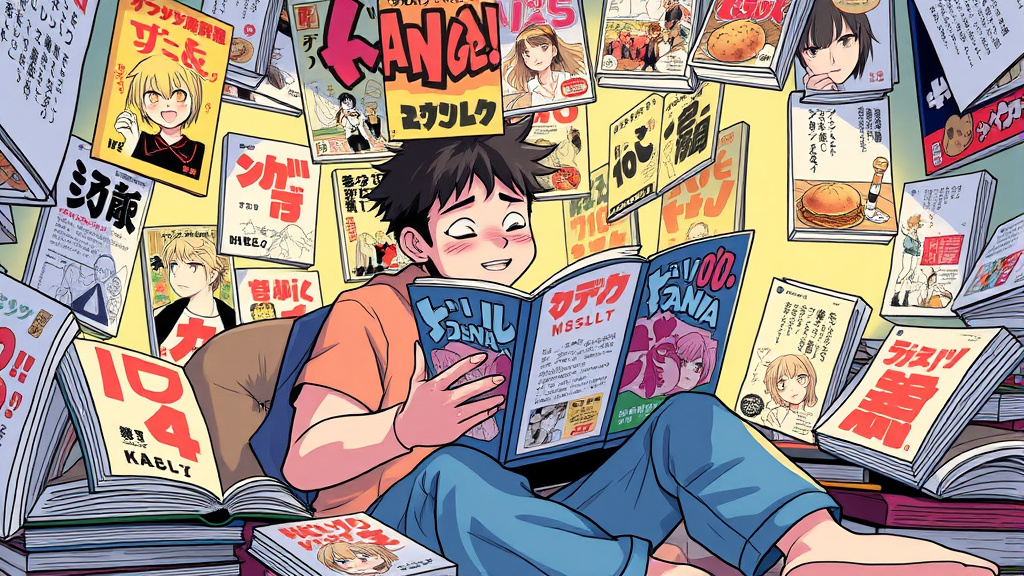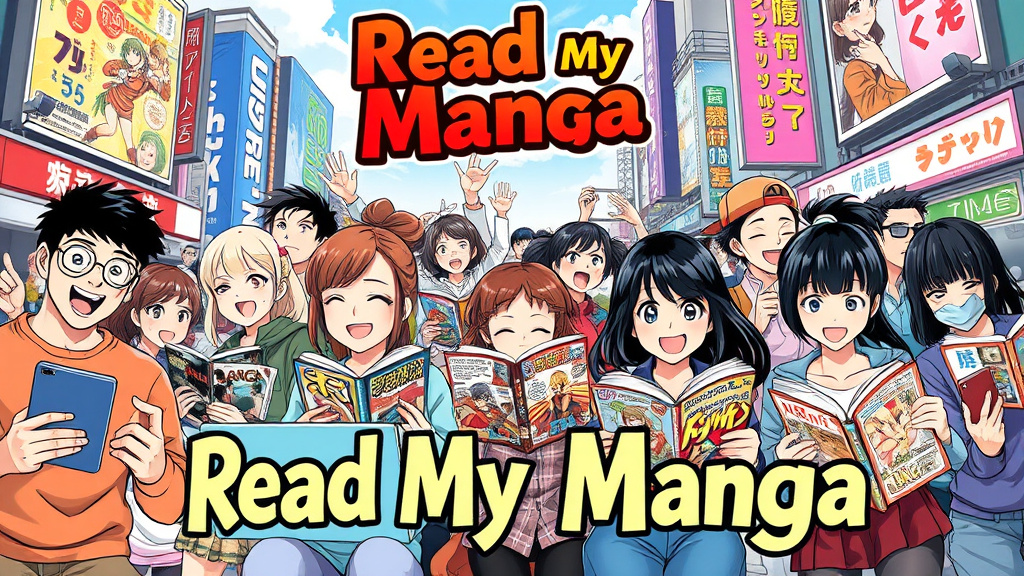Making a manga is an art form that combines creativity, storytelling, and technical skill into a captivating visual narrative. Whether you’re an aspiring artist or a writer looking to bring your stories to life through manga, understanding the entire process—from conceiving your idea to publishing—is essential. This guide delves into each crucial step, offering insights, tips, and personal analyses to help you craft manga that stands out and resonates deeply with audiences.
Main Keyword: make a manga
From Idea to Ink: A Comprehensive Guide to Making Manga
Turning a fleeting idea into a polished manga requires careful planning, creativity, and perseverance. It all begins with brainstorming compelling concepts—what genres excite you? What themes do you want to explore? Once you have a foundation, refining the core idea and defining your target audience lays the groundwork. From there, translating that concept into a visual and narrative blueprint involves storyboarding, character development, and mastering your art style. Throughout the process, cultivating patience and adaptability is vital, because creating manga is an evolving journey rather than a straightforward task.
This comprehensive process guides you through transforming raw inspiration into finished artwork ready for publication. It emphasizes that, beyond talent, dedication and a structured approach are what make a manga truly memorable. So, whether you're imagining epic battles or heartfelt romances, understanding every phase of manga creation ensures your story is told in the most engaging and impactful way.
 Hình minh họa: make a manga – read romance manga online free
Hình minh họa: make a manga – read romance manga online freeCharacter Design 101: Crafting Memorable Manga Characters
Creating memorable characters is at the heart of making a manga that resonates. Strong character design isn't solely about aesthetics—it’s about expressing personality, backstory, and emotional depth through visual cues. Start by sketching different silhouettes to ensure that each character has a distinctive shape that makes them recognizable even in monochrome. Consider their outfits, facial features, gestures, and expressions, all of which should align with their role and personality in the story. Iconic manga characters often have standout features that symbolize their traits—think Naruto’s spiky hair or Luffy’s straw hat.
Beyond appearance, developing a character’s backstory and motivations enriches their design and makes their actions believable. When designing your characters, think about how their visual elements can communicate who they are, and ensure consistency across different scenes. Personal insight suggests that it’s helpful to create character sheets that detail their personalities, quirks, and evolution over the story. Well-designed characters become the emotional anchors of your manga, driving engagement and empathy.

Storyboarding for Manga: Visualizing Your Narrative
Storyboarding is the blueprint of your manga. It involves translating your script or story outline into rough visual layouts that preview scene compositions, pacing, and panel arrangements. A clear storyboard allows you to visualize the flow of narration, mood shifts, and action sequences, addressing potential problems early. During this phase, experiment with different panel sizes and arrangements, thinking about how each perspective impacts storytelling—close-ups for emotion, wide panels for action or landscape. Personal insights highlight that flexibility during storyboarding can foster creative solutions, so don’t be afraid to deviate from initial plans if a better idea emerges.
Furthermore, a good storyboard isn’t just about plotting scenes but also about controlling pacing. Rhythm is crucial: quick, punchy panels can create excitement, while larger, detailed panels slow down time for effect. The goal is to keep the reader engaged, guiding their eyes smoothly across each page. With careful planning, your storyboard becomes an efficient guide for the subsequent stages—art, dialogue, and inking—that uphold your storytelling vision.
Mastering Manga Art Styles: Finding Your Unique Voice
In the vast world of manga, each artist’s style is a signature that sets their work apart. While studying various manga influences is valuable, developing your own art voice takes experimentation and honest reflection. Dive into different styles—be it the dynamic action of shonen, the delicate linework of shojo, or the gritty realism of seinen—and identify what resonates with you. Practice consistently, focusing on capturing the emotions and energy that make your storytelling compelling. Over time, your personal style will emerge, reflecting your artistic sensibility and narrative needs.
Having a distinct style is more than just aesthetics; it enhances storytelling by reinforcing tone and mood. Think of the visual rhythm and character designs as tools for emotional storytelling—whether exaggerated expressions for comedy or subtle shading for introspection. Personal analysis suggests that embracing imperfections in your early work allows you to grow naturally and authentically. Continuously refining your style, while staying true to your creative instincts, helps create a manga that feels genuine and impactful.
Page Layout and Panel Design: Directing the Reader's Eye
Effective page layout and panel design are vital for controlling how readers experience your story. An intuitive layout guides the eye seamlessly from one scene to the next, maintaining flow and clarity. Use panel size and placement deliberately: large panels can build tension or emphasize a moment, while smaller panels accelerate pacing and dialogue delivery. Dynamic angles and varied compositions keep the visuals exciting and prevent monotony. Personal insight underscores that irregular panel layouts—such as diagonals or unconventional borders—can evoke emotion and surprise readers, making your manga visually engaging.
Conversely, clarity should never be sacrificed for style. Balancing complexity with simplicity ensures readers can follow the narrative easily. Strategic use of whitespace, panel overlaps, and silence enhances particular scenes’ emotional impact. When planning your page layout, consider how each element contributes to storytelling, emotional beats, and overall readability. Thoughtful panel design transforms a sequence of images into a captivating visual narrative that actively guides the reader’s experience.
Inking and Screentones: Adding Depth and Texture to Your Manga
Inking is where your manga begins to take definitive form—adding weight, contrast, and clarity to your lines. A steady hand, combined with understanding line weight and texture, can create a sense of depth and focus. Thicker lines can bring characters forward, while thinner lines suggest background details or softer textures. Screentones, on the other hand, allow for shading and texture without the need for grayscale printing. They evoke atmosphere and mood—be it the gritty shadows of an alley or delicate shadows on a character’s face.
From personal experience, mastering inking and screentones requires patience and practice. Digital tools have simplified this process, but traditional techniques can add a unique touch and tactile quality to your work. When applying screentones, consider their significance—are they used for mood, texture, or emphasizing volume? Subtle application can add realism, while bold patterns can evoke stylized effects. Effectively combining ink work and screentones enhances visual depth, enriching the reader’s immersion into your manga world.
Writing Compelling Dialogue and Narrative for Manga
Dialogue and narrative are the backbone of storytelling in manga—they breathe life into characters and propel the plot forward. Crafting natural, distinct voices for your characters helps readers connect emotionally and understand their personalities and motivations. Avoid overly verbose exchanges; keep dialogue concise yet impactful, balancing speech with visual storytelling. Additionally, narrative boxes and internal monologues can provide context, humor, or insight without breaking the visual flow.
Personal insights emphasize that the best manga dialogues often show more than tell. Use dialogue to reveal subtext, relationships, and conflicts subtly, enhancing engagement. Remember that visuals support narrative—use expressions, body language, and background elements to convey what words might not explicitly state. Striking a balance between dialogue, narration, and silence creates a rhythmic reading experience that adds depth, emotion, and authenticity to your manga.
Digital vs. Traditional Manga Creation: A Comparative Analysis
Choosing between digital and traditional manga creation methods depends on preference, resources, and project scope. Digital tools offer unparalleled convenience—layers, undo functions, and easy editing streamline the process and speed up production. They also facilitate easier sharing and distribution, especially in the era of online publishing. Conversely, traditional techniques—pencil sketches, ink, and screentones—offer a tactile experience that many artists find inspiring and authentic. The ink and paper textures often give a unique character to handmade manga.
From a personal perspective, hybrid approaches are increasingly popular; artists may start with traditional sketches, then refine digitally. Digital work allows for experimentation without significant material costs, but mastering the physical skills links an artist more deeply to traditional manga aesthetics. Ultimately, your choice should align with your workflow, artistic goals, and what inspires you most. Recognizing the strengths and limitations of each approach empowers you to produce manga more efficiently while maintaining your creative vision.
Publishing Your Manga: Exploring Options for Getting Your Work Seen
Once your manga reaches completion, the challenge shifts to gaining visibility. Traditional publishing involves pitching your work to publishers—understanding submission guidelines and preparing a professional portfolio are critical. Self-publishing provides more control and can be adapted for print or digital platforms, giving creators direct access to audiences through websites, social media, or crowdfunding sites like Kickstarter. Each approach has its pros and cons; traditional publishers offer wider distribution, but self-publishing offers creative freedom and potentially higher royalties.
From personal experience, building a dedicated readership requires persistence and strategic promotion. Engaging with online manga communities, attending conventions, and participating in contests can elevate your profile. Licensing and international publishing are also viable routes if your work gains popularity. Whichever path you choose, focusing on quality, consistency, and fan engagement is key to transforming your manga from a personal project into a recognized work. Persistence and proactive promotion often turn passion into profession.
Marketing Your Manga: Building an Audience and Promoting Your Work
Creating your manga is just the first step; effective marketing determines how far your work reaches. Building an online presence through social media, creating a website or blog, and sharing snippets or behind-the-scenes content cultivates interest. Collaborating with other creators or participating in community events elevates visibility and establishes credibility. Personal insights reveal that storytelling extends beyond your manga—attentive marketing and engagement foster dedicated followers who will promote your work organically.
In addition, leveraging digital platforms such as Webtoon, Tapas, or social media outlets like Twitter and Instagram can significantly expand your audience. Consistent updates, interacting with fans, and offering exclusive content help foster loyalty. Additionally, creating merchandise or hosting live Q&A sessions adds value and deepens reader relationships. Ultimately, strategic marketing turns a well-crafted manga into a lasting phenomenon, enabling your storytelling to inspire and entertain a global audience.
Conclusion
Making a manga is a multifaceted journey that blends storytelling, artistic skill, and strategic promotion. From ideation and character design to page layout and inking, every step requires forethought and dedication. Developing your unique style and effectively communicating your narrative through visual storytelling creates an experience that captures readers’ imaginations. Navigating between digital and traditional tools allows flexibility, while understanding publishing and marketing ensures your work reaches a wider audience. With perseverance and passion, you can transform your ideas into a compelling manga that not only entertains but resonates deeply—truly a labor of love that turns your creative vision into inked reality.





